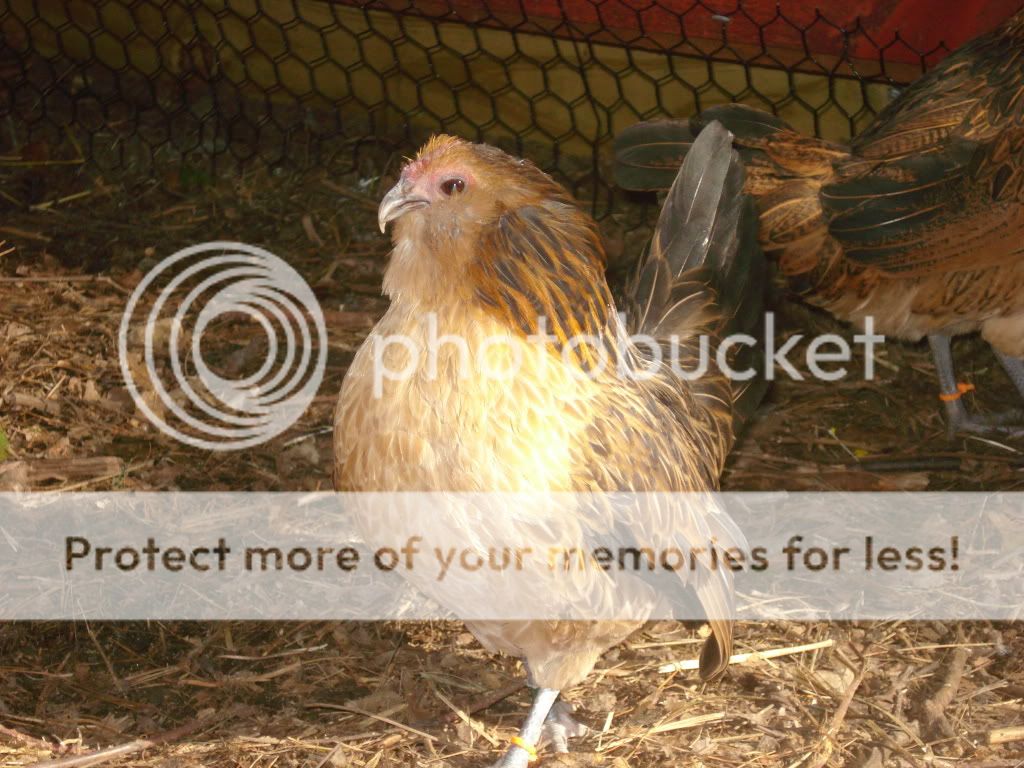I found this in a book, and typed it up. I find it interesting, and hope it is helpful ....
By Mark Pattison, Paul McMullin, Janet M. Bradbury
Nutrition and Hatchability
The importance of the nutrition of the dam is indicated by the fact that the egg must contain all the nutrients needed by the embryo.
Development in the egg and for a week or more after hatching is, as far as fat soluble vitamins and some other factors are concerned, reliant upon supplies from the yolk. Hence, deficiency signs in newly hatched chicks (and often within the next 7 - 10 days) usually reflect a breeder feed inadequacy rather than a relationship with the starter feed.
It is difficult to affect the relative protein, fat, and carbohydrate content of an egg via the diet of the hen, but the concentration of the vitamins and trace elements in her blood and tissues directly influences that in her egg. Hence, analyses of egg yolk to determine vitamin and other deficiencies in the breeder may be the preferred and more direct route than blood or tissue sampling of the relevant hens.
Even at acceptable rates of hatchability a proportion of dead-in-shell embryos may exhibit nutritional signs, as detailed above, as a result of individual variations of metabolism.
It is of basic importance to realize that hens can produce eggs with dietary levels of vitamins that will not allow the eggs to hatch (except in the case of Vitamin A deficiency, in which the cessation of production occurs first).
Nutrient deficiencies may give rise to malformed embryos or reduction in hatchability, but it may be difficult to identify by the examination of the embryo the nutrient deficiency responsible for the poor hatchability, since the time of embryonic death will often depend on the degree of deficiency involved. Thus, it has been shown by experiment with pantothenic acid that, while in extreme deficiency hatchability may be totally suppressed, in milder deficiencies a peak of early mortality (1-4 days) occurs but later peaks change according to the amount of pantothenic acid in the diet. Most water-soluble vitamins have a similar effect.
In practice the nutrient deficiencies most likely to give rise to reduced hatchability, unless adequate breeder supplements are used, are Vitamin B2 (riboflavin), and some others of the B group (eg biotin), Vitamin E, manganese, zinc, phosphorus.
Early death may be related to:
* Biotin
* Vitamin E deficiency (vascular lesions).
Later death (ie later and around mid-term) may be related to:
* Riboflavin (anaemia, oedema, micromelia, mesonephros degeneration, and clubbed down)
*Phosphorus (no specific abnormalities)
*Zinc inadequacies (faulty trunk, limb, beak, brain and eye development - abnormalities associated with development of the skeletal mesoderm).
Death during the last few days and at hatching, may be related to deficiencies of the following:
*Vitamin B2 (clubbed down, curled toe, micromelia, degeneration of the myelin sheath of peripheral nerves, degeneration of embryonic Wolffan bodies)
*Biotin chondrodystrophy, syndactyly, characteristic skeletal deformities, ataxia, and chondrodystrophy in newly hatched chicks)
*Folic Acid (chicks may be of normal appearance but die soon after pipping; in severe depletion chondrodystrophy, syndacryly, and parrot beak)
*Vitamin B12 (malposition, myoatrophy, chondrodystrophy, oedema, hemorrhage)
*Manganese (chondrodystrophy, parrot beak, globular head, cervicothoracic oedema, retarded down feather and body growth, micromelia and ataxia in newly hatched chicks) - bone formation defects are probably associated with abnormal mucopolysaccharide in the organic matrix of bone. Vitamin B12 and manganese deficiencies may be associated with extreme reduction in hatchability.
Nutritional deficiencies may be direct (ie due to inadequate supply in the feed). This can be the result of nutrients not being added, badly mixed or badly stored feed. Alternatively, dilution by post-manufacture addition of cereals to formulated rations can be implied.
Indirect deficiencies can be caused by antagonists such as mycotoxins, inadequate absorption (eg parasitism or disease), underconsumption (eg overcrowding), or the results of an inappropriate drug inclusion.
While "nutritional deficiency lesions" are commonly seen in dead-in-shell embryos, incorrect feed manufacture is now seldom incriminated and definitive deficiencies of single nutrients are rare. Instead, a miscellany of lesions suggestive of a number of nutrient shortfalls is the commoner finding. It has also been reported that syndromes, which seem to mimic the signs of certain deficiencies, may be evident despite adequate supplies of that nutrient in the feed (eg a clubbed down syndrome has been seen in flocks well supplied with Vitamin B2).
Definitions, for some who may not know:
chondrodystrophy: A disturbance that affects the development of the cartilage of the long bones and that especially involves the region of the epiphysial plates, resulting in arrested growth of the long bones.
myoatrophy: atrophy or wasting away of the muscles.
syndactyly: A condition in which two or more of the toes are joined (fused) together.
oedema: The presence of an excessive amount of fluid in or around cells, tissues or serous (resembling, producing, or containing serum) cavities of the body.
micromelia: abnormally small and imperfectly developed extremities.
ataxia: shaky and unsteady movements or loss of the ability to coordinate muscular movement.


